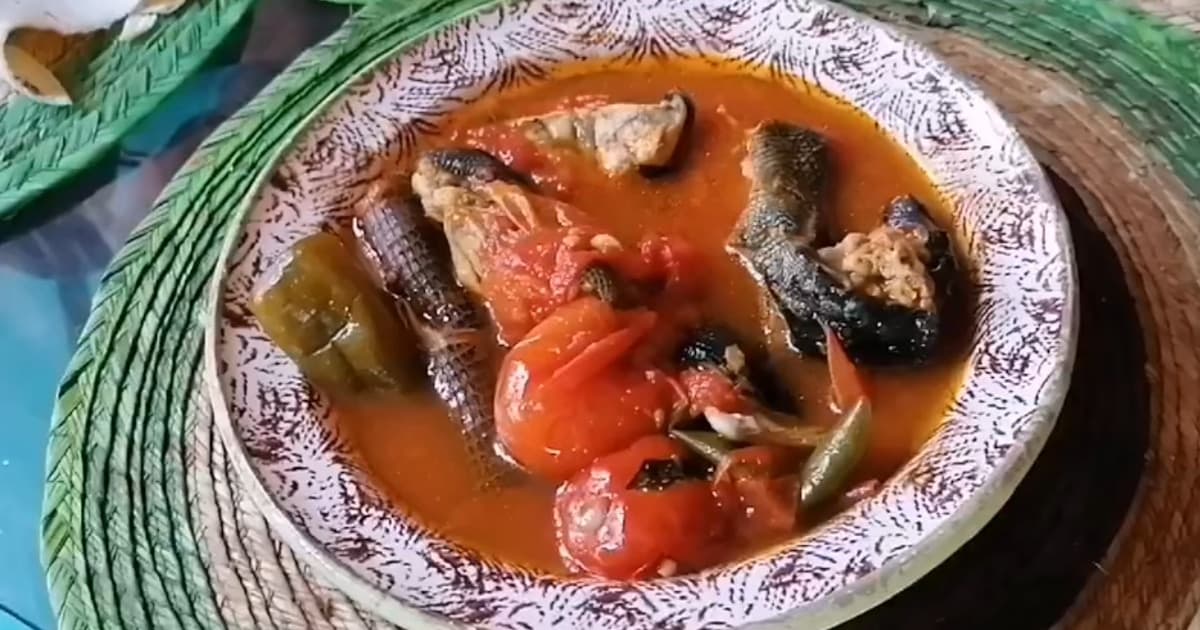Iguana Meat in Traditional Caribbean & Latin American Cuisine
A Culinary Tradition Spanning Centuries
Long before iguana meat became a curiosity for adventurous foodies, it was a cornerstone protein source for indigenous peoples across the Americas. This humble reptile, often dismissed as just another lizard by those unfamiliar with its culinary potential, has sustained communities, graced celebration tables, and earned its place in the rich tapestry of Caribbean and Latin American cuisine.
Let's embark on a journey through time and across cultures to discover how iguana meat became "chicken of the trees" and why it remains an important traditional food today.
Ancient Roots: Indigenous America's Sustainable Protein
The story of iguana as food begins thousands of years ago with the indigenous peoples of Central and South America.
The Mayan Connection
The ancient Maya didn't just eat iguana meat, they farmed iguanas, demonstrating sophisticated understanding of sustainable food production long before it became a modern buzzword. Mayan communities particularly prized iguana eggs, which were considered a delicacy and important source of protein and nutrients.
Archaeological evidence suggests that iguanas were semi-domesticated, with communities managing iguana populations much like others might manage chickens or ducks. This wasn't random harvesting, it was intentional animal husbandry.
Colonial Records
When Spanish colonizers arrived in the Americas, they documented what they found. Fray Bernardino de Sahagún, a Spanish missionary who chronicled life in colonial Mexico, specifically mentioned iguana as a traditional food throughout Western Mexico. He noted that when properly prepared, iguana meat was not just edible but genuinely good to eat.
His observations highlighted that this wasn't survival food, it was cuisine, prepared with care and specific techniques passed down through generations.
Regional Traditions: How Different Cultures Prepare Iguana
As iguana consumption spread and evolved, different regions developed their own signature preparations.
Mexico: Where Tradition Runs Deep
In Mexico, particularly in the states of Jalisco, Michoacán, and Colima, iguana meat has remained an important part of regional cuisine.
Traditional Mexican preparations include:
- Iguana en Guisado - A hearty stew with tomatoes, chiles, and aromatic spices (see our braising techniques)
- Iguana Pozole - The reptilian twist on the classic hominy soup
- Iguana Birria - Slow-cooked in a rich, spiced sauce, traditionally served at celebrations
- Tacos de Iguana - Grilled or braised meat served in warm tortillas (learn about Mexican spice blends)
- Flautas de Iguana - Rolled, fried tacos with shredded iguana meat
In these regions, iguana meat often appears at special occasions and festivals, maintaining its status as celebration food rather than everyday fare.
Caribbean Islands: Stew Traditions
The Caribbean developed its own distinct iguana cuisine, with the iguana stew emerging as the region's signature dish.
Guyanese and Trinidadian Style
In Guyana and Trinidad, iguana stew is considered a delicacy often reserved for special events. The preparation process reflects the multicultural influences of the Caribbean:
- Meat is first marinated in a mixture of vinegar and lime juice
- Annatto seeds are fried in oil to create a vibrant red color
- The meat is browned, then stewed with onions, garlic, tomatoes, and green peppers
- Long, slow cooking produces fall-off-the-bone tender meat in a rich sauce
The result? A dish that tells the story of African, indigenous, and colonial European culinary traditions merging into something uniquely Caribbean.
Belizean Preparation
Belize takes a slightly different approach to its iguana stew:
- Extended marination in vinegar and lime juice (often overnight)
- Stewing with a rainbow of vegetables: onions, carrots, cabbage, tomatoes
- Fresh cilantro added near the end for bright, herbal notes
- Typically served over rice or with fresh tortillas
Each island and coastal nation has its own variation, but the core concept remains: long, slow cooking that honors the ingredient and transforms it into comfort food.
Curaçao: Tourist Favorite
On the island of Curaçao, iguana has made the leap from traditional food to tourist attraction. "Stoba Yuana" (stewed iguana) can be found at restaurants and eating establishments throughout the island.
This represents an interesting evolution, what was once purely subsistence and traditional cuisine has become a point of cultural pride, something to share with visitors as part of the authentic Curaçaoan experience.
Guatemala and Central America
Throughout Guatemala and neighboring Central American countries, iguana meat continues to feature in traditional dishes, often incorporated into:
- Iguana soup (sometimes called "sopa de garrobo")
- Tacos and tamales
- Grilled preparations served at roadside stands
In rural communities, these preparations haven't changed much over generations, they're living links to pre-Columbian cooking traditions.
Cultural Significance Beyond Sustenance
Symbol of Resourcefulness
In many communities, iguana meat represents more than nutrition, it symbolizes resourcefulness and connection to the land. Iguana hunters possess specialized knowledge passed down through families: where to find them, how to catch them, the best seasons, and proper preparation techniques.
This knowledge represents cultural capital, a badge of expertise in traditional ways of living.
Celebration Food
Across its range, iguana meat frequently appears at:
- Wedding celebrations
- Religious festivals
- Community gatherings
- Important family milestones
Serving iguana at these events honors tradition and signals the importance of the occasion. In some communities, a host who serves iguana demonstrates both hospitality and cultural connection.
Seasonal Traditions
In certain regions, iguana hunting and consumption follows seasonal patterns, often tied to religious observances or agricultural cycles. This seasonal approach has helped maintain sustainable iguana populations in areas where traditional practices are still followed.
Modern Context: Sustainability and Conservation
The Invasive Species Paradox
In places like Florida and Puerto Rico, iguanas have become invasive species, threatening local ecosystems and native wildlife. This has created an unusual situation where consuming iguana meat serves both culinary and environmental purposes.
Programs in Florida have encouraged harvesting and consumption of invasive green iguanas, attempting to control their population while introducing people to a traditional protein source. It's a case where eating iguana is both culturally significant and ecologically responsible.
Conservation Concerns
The flip side: in parts of Central America, some iguana species face population pressures from over-harvesting and habitat loss. This has led to:
- Iguana farming operations to meet demand sustainably
- Regulations on wild iguana harvesting
- Conservation education in communities where iguana hunting is traditional
The challenge is balancing cultural food traditions with species conservation, a complex issue without simple answers.
Legal Considerations Today
Before sourcing iguana meat, it's crucial to understand local regulations:
In regions where iguanas are invasive: Harvesting is often encouraged or permitted, though specific regulations vary.
In areas with native populations: Regulations may restrict or require licensing for iguana harvesting to prevent overhunting.
International trade: Some iguana species are protected by international treaties, making their trade across borders illegal.
Always verify local laws before harvesting or purchasing iguana meat.
The Cultural Preservation Movement
Today, there's growing interest in preserving traditional iguana recipes and cooking knowledge. Cultural organizations, cooking schools, and food historians are documenting preparation methods before they're lost to time.
Younger generations in traditional iguana-consuming regions are showing renewed interest in these heritage foods, seeing them as connections to their cultural identity and sustainable, locally-sourced protein.
Iguana Cuisine Goes Mainstream
Adventurous chefs in urban areas are incorporating iguana into fusion cuisine, creating dishes that honor traditional preparations while adding modern twists:
- Iguana tacos with trendy toppings
- Iguana sliders with artisanal buns
- Refined versions of traditional stews plated for fine dining
- Iguana paired with unexpected ingredients from other culinary traditions
This modernization helps keep iguana cuisine relevant while introducing it to new audiences.
Why These Traditions Matter
Understanding the cultural history of iguana meat transforms it from "exotic" or "weird" food into what it truly is: a legitimate, historically significant protein source with deep roots in American cuisines.
When you prepare iguana using traditional methods, you're not just cooking dinner, you're participating in culinary practices that stretch back centuries. You're honoring the knowledge of indigenous peoples who understood sustainable protein sources long before that was a trendy concept.
Every pot of iguana stew, every batch of tacos, every celebration where iguana is served represents the continuation of traditions that have nourished communities for generations. Whether you're using time-honored cooking techniques or experimenting with traditional spice blends, you're connecting with this rich culinary heritage.
Looking Forward
As we face challenges of climate change, sustainable food production, and preserving cultural heritage, traditional foods like iguana meat offer valuable lessons. They remind us that:
- Sustainable protein sources have always existed; we just need to remember them
- Local food systems supported communities long before global supply chains
- Traditional knowledge about food preparation and sourcing is worth preserving
- Cultural cuisine deserves respect, not exoticization
The next time you prepare iguana meat, take a moment to appreciate the rich history behind it. You're not just trying something different, you're connecting with a tradition that spans continents and centuries, one that continues to evolve while honoring its roots.
From ancient Mayan farms to modern Caribbean kitchens, iguana meat tells a story worth savoring.
Enjoyed this article? Share it!
Comments
Please log in to leave a comment
No comments yet. Be the first to comment!

